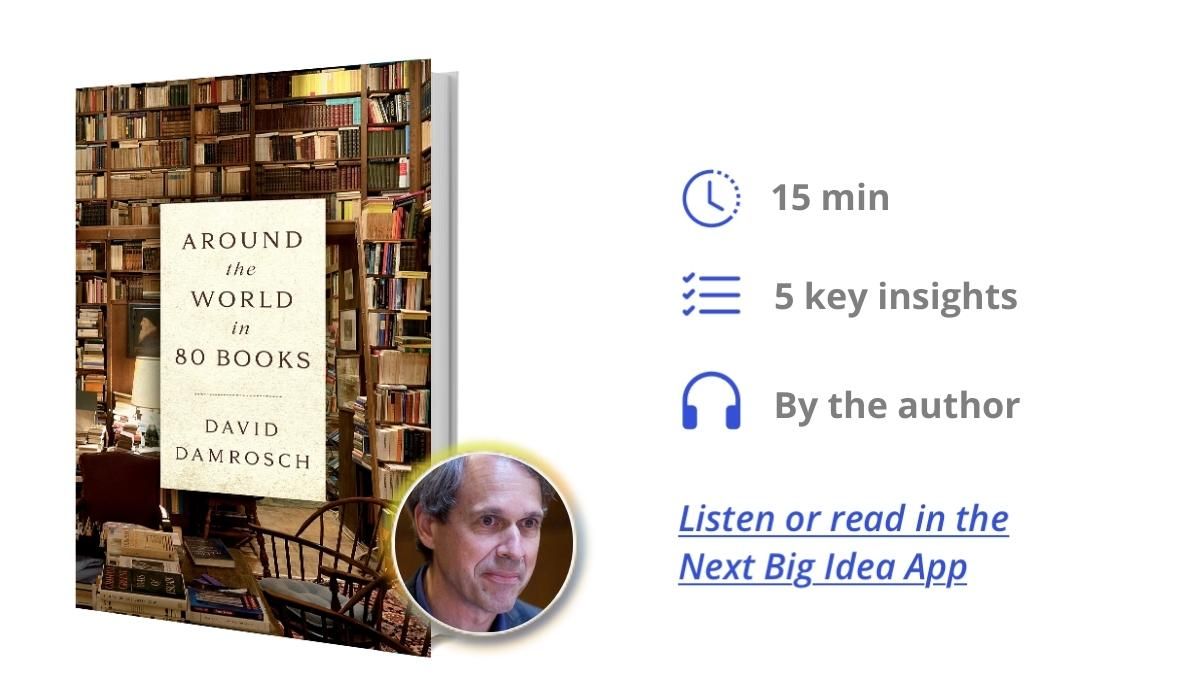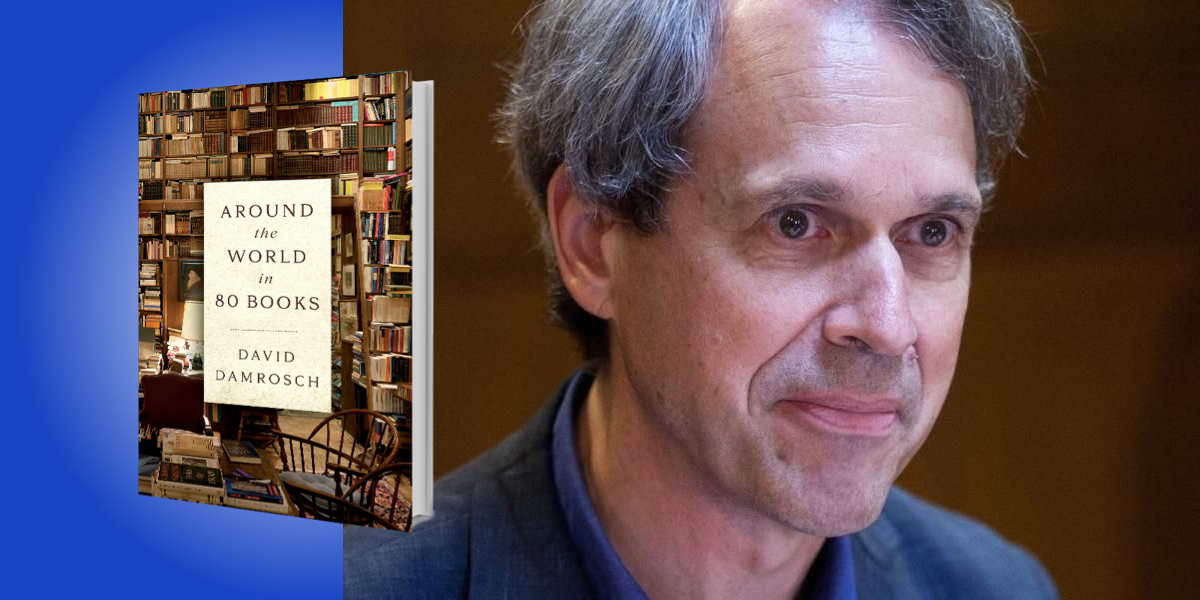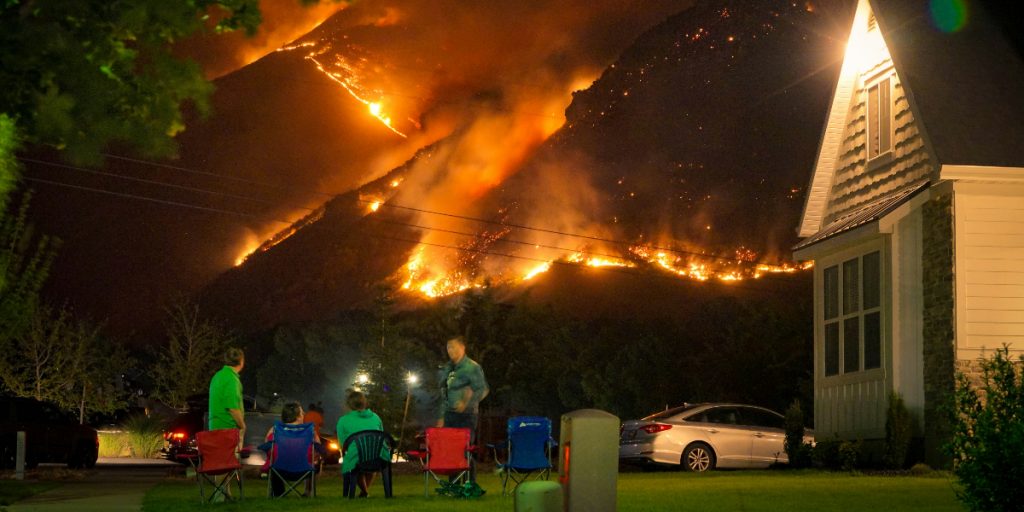David Damrosch is the Ernest Bernbaum Professor of Comparative Literature and chair of comparative literature at Harvard University, and director of Harvard’s Institute for World Literature. He is the author or editor of 25 books, he has lectured in 50 countries around the world, and his online Harvard course Masterpieces of World Literature has been taken by nearly 100,000 people.
Below, David shares 5 key insights from his new book, Around the World in 80 Books. Listen to the audio version—read by David himself—in the Next Big Idea App.

1. We’re lost without our storytellers.
In the Sherlock Holmes story “A Scandal in Bohemia,” the King of Bohemia consults with Sherlock about his troubled personal life. Sherlock’s roommate, Dr. Watson, starts to step out, but Sherlock stops him. “Stay where you are,” he declares, “I am lost without my Boswell.”
Sherlock is a consummate loner, but he needs Watson as his sounding-board and the writer of his stories. More than ever today—in a world whose medical, social, and political order all seem to be collapsing—we are lost without our storytellers.
The pandemic provided the frame for my 80-book project, but equally troubling phenomena are the rise of ethnic nationalism, isolationism, and the fear of people or ideas crossing borders. We’re all finding it more and more difficult to really listen to viewpoints we don’t already agree with. In such times, literature gives a powerful means to resist what one of my authors, Chimamanda Adichie, calls “the danger of a single story.”
Another one of my 80 writers, the Polish novelist Olga Tokarczuk, put it this way when she accepted the Nobel Prize for Literature in 2019: “The world is a fabric we weave daily on the great looms of information, films, books, gossip, little anecdotes…thanks to the internet, almost everyone can take part in the process, taking responsibility or not, lovingly or hatefully, for better and for worse. When this story changes, so does the world.” She adds that dictators have always known this, and that “he who weaves the story is in charge.” The more widely we read, the more freedom we gain to escape the confines of our four walls, our local perspectives, and to weave better stories about ourselves and our world.
2. Poets cook their heart into verse.
Writing during the pandemic, I was often drawn to writers who found ways to transform traumatic events into works of lasting power and beauty. I take the image of the cooking heart from one of my authors, the classical Persian poet Farid ud-Din Attar. In 1154, when he was a boy, his city was sacked by Turkish invaders. He grew up in a land of corrupt, repressive rulers and a rampant materialism that he despised. In his great poetic tale, The Conference of the Birds, he declares:
I’m Attar, one who deals in perfume, but my
Own heart is dark as any dye,
Grieving in solitude for people who
Lack sense in everything they do.
I spread the tablecloth, and wet my crust of bread
With all the salty tears I shed;
It is my heart I cook.
And yet Attar didn’t cook his grieving heart into some grim saga of woe; instead, he composed a delightful tale that’s both mystical and satirical. In it, a flock of birds goes in search of a ruler to bring order to their chaotic lives, but they’re constantly held back by their attachment to worldly wealth and power. In the end, they find that the ruler they’ve longed for is themselves.
In our own time, take Virginia Woolf. As a girl, she was sexually abused by two of her half-brothers. Her mother died when she was 13, and she attempted suicide when her father died a decade later. To top it off, ten years later World War I broke out. But soon after the war ended, she wrote Mrs. Dalloway—one of the greatest novels of the 20th century—and there she cooked her own broken heart into prose. Her novel connects her personal traumas with the wider tragedy of the war in the figure of the shell-shocked veteran Septimus Warren Smith, as well as in his Italian war bride, Lucrezia, who desperately tries to save him from suicide.
Like Attar, Woolf folds traumas within a dazzling narrative that’s filled with the joy of life. As Clarissa Dalloway reflects as she walks through London on an errand: “Heaven only knows why one loves it so…making it up, building it round one, tumbling it, creating it every moment afresh…in the bellow and the uproar; the carriages, motor cars, brass bands; barrel organs; in the triumph and the jingle was what she loved; life; London; this moment of June.”
3. Less can be more.
Literature allows writers to break out of the confines of their lives. We readers cherish this freedom amid the pandemic’s lockdowns and travel restrictions, but constraints aren’t all bad. In Mrs. Dalloway, Woolf aimed to sum up modern life in a story set on a single June day. Three hundred years before her, the great poet Matsuo Basho revolutionized Japanese poetry by perfecting the form of the haiku, which could only be 17 syllables long. He did this by focusing on the deep meaning of the simplest things: a frog jumping into a pool, or the blossoming of a cherry tree.
“Proust’s Japanese origami, like Basho’s haiku, or even a daily blog post, open the creative moments hidden in the heart of our everyday lives.”
All of us can learn from great writers’ creative use of whatever hems them in—pressures and problems transformed into artful frameworks for constructing their stories and poems. I experienced this myself when I wrote my 80 Books blog. Mimicking Jules Verne’s hero Phileas Fogg, I wrote about 80 books in 80 days of work. As an academic, usually I can take two or three months to write up a chapter on an author, but now, I only had a day for each book, and I only had fifteen hundred words instead of fifteen thousand.
This constraint turned out to be liberating: every day, I had to cut to the chase and find the best way to say what really matters about each work. That was already a challenge with Basho’s delicate haiku; it was another thing altogether when it came to Marcel Proust’s 3,000-page-long cathedral of a novel, In Search of Lost Time. But less really can be more: we can see the essence of Proust’s art if we slow down, linger over a single resonant passage, think about how it relates to the whole work, to Proust’s entire world, and to our own. As Proust says about the childhood memories that flood back to his hero, Marcel, when he tastes a petite madeleine-cake dipped in tea, “the Japanese amuse themselves by filling a porcelain bowl with water and steeping in it little crumbs of paper which stretch themselves and bend, take on color and distinctive shape, and become flowers or houses or people, permanent and recognizable; so too in that moment all the flowers in our garden…and the water-lilies on the Vivonne…and the parish church, and the whole of Combray…sprang into being, town and gardens alike, from my cup of tea.”
Proust’s Japanese origami, like Basho’s haiku, or even a daily blog post, open the creative moments hidden in the heart of our everyday lives.
4. Literature is a portal into the 4th dimension.
In his novel, Proust says that an old church exists “in a four-dimensional space, the name of the fourth being Time.” Literature has a special ability to bring us into the hearts and minds of people from the distant past. I’ve worked a good deal on ancient Egypt, but if I just had the pyramids and the carvings on walls, I really wouldn’t know what those artists and architects were thinking. But the Egyptians buried papyrus scrolls in their tombs, for entertainment in the afterlife. Here’s a verse from a collection called “The Songs of Excellent Enjoyment”:
Why need you hold converse with your heart?
To embrace her is all my desire.
As Amun lives, I come to you,
my loincloth on my shoulder.
Or again, consider the Aztecs, whose entire world fell apart during the 16th century, in the wake of conquest and plague. How did the world look to them, and what did they think of the new European world they were suddenly thrust into contact with? Here’s a poem written by an Aztec nobleman after Cortes took him to Rome in 1525, to show him off to Pope Clement VII:
Friends, willow men, behold the pope.
The pope is on God’s mat and seat and speaks for him.
Look! It’s the pope! He has his turquoise blowgun and he’s shooting in the world.
Well, the pope probably wasn’t shooting darts from a turquoise blowgun, but this was a way for the poet to convey the pope’s power. He goes on to cannily sum up the pope’s true interests: “He’s said: What do I need? Gold! Everybody bow down! Call out to Dios in excelsis!”
Poetry gave this Aztec nobleman a way to process his unimaginable experience, for himself and for his friends back home, and it gave the Aztecs strength when Cortes tortured two of their leaders, looking for hidden stashes of gold. As another poem recounts: “Yet peacefully were Motelchiuh and Tlacotzin taken away. They fortified themselves with song when they were delivered to the fire in Coyohuacan.”
In times of trouble, we too can fortify ourselves with four-dimensional poems and stories that come down to us, across the ages and across the oceans.
5. Art is magic, delivered from the lie of being truth.
I take this phrase from the philosopher Theodor Adorno, who argued that literature frees us from the manipulative truth-claims of politicians and dogmatic authorities. Two years after Adorno wrote those words, J.R.R. Tolkien published The Lord of the Rings, which features the magician Gandalf the Grey and a whole host of unreal beings, from hobbits to elves to walking, talking trees. These imaginary beings deal with everything that concerned Tolkien, from world war, to environmental degradation, to the quest for the most delicious mushrooms.
The best works of fantasy aren’t at all escapism. Instead, they magically transform our world through fictions that we can explore without getting seduced into taking them literally. Madeleine L’Engle put it this way after she published A Wrinkle in Time, which had been turned down by thirty publishers who thought it was too strange and too serious for kids: “It’s often possible to make demands of a child that couldn’t be made of an adult…many adults come closed to an open book. This is one reason so many writers turn to fantasy when they have something important and difficult to say.”
The most fantastical works intervene in reality by breaking the chains of habit; they let us know that it doesn’t have to be like this. The great fantasist Italo Calvino transformed the real-life travel account of Marco Polo into his luminous book Invisible Cities, in which Marco describes a whole series of impossible cities to Kublai Khan. One city is made entirely of pipes and plumbing fixtures, in which nymphs bathe in the mornings; another is suspended over an abyss; the inhabitants of a third are about to be crushed under mountains of their own garbage. As Polo says at the book’s end:
The inferno of the living isn’t something that will be; it’s what is already here, the inferno where we live every day, that we form by being together. There are two ways to escape suffering it. The first is easy for many: accept the inferno and become such a part of it that you can no longer see it. The second is risky and demands constant vigilance: seek and learn to recognize who and what, in the midst of the inferno, are not inferno, then make them endure, give them space.
To listen to the audio version read by author David Damrosch, download the Next Big Idea App today:































